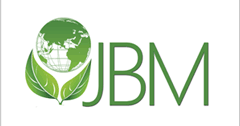Abstract
Salmonella poses a significant public health challenge due to its antibiotic resistance, zoonotic transmission, and diverse clinical manifestations. Over 60 % of human diseases are zoonotic, influenced by ecological dynamics and human activities such as land use changes, population growth, and international travel. Foodborne diseases, particularly those caused by Salmonella spp., have a substantial global impact, especially in low-income countries. Salmonella is divided into two species, Salmonella enterica and Salmonella bongori, with more than 2000 serotypes and six subspecies within S. enterica. This bacterium is highly adaptable, surviving extreme conditions such as drying, high salt concentrations, and acidic environments. Detection methods typically involve pre-enrichment, followed by specific enrichment, plating, and identification through serological and molecular techniques like PCR. Severe cases, especially in vulnerable populations, often require antimicrobial treatment. Salmonella’s pathogenicity is driven by its ability to invade, persist, and replicate within host cells, facilitated by Salmonella pathogenicity islands (SPIs) and type III secretion systems. Epidemiological data reveal a global distribution of enteric fever, with high incidence and mortality rates in Africa, Asia, and South America, while lower rates are reported in developed regions, often linked to international travel. This study adopts a One Health approach, examining Salmonella's resistance, zoonotic transmission, and public health impact, while suggesting innovative strategies for detection and control to mitigate its global effects.
Article History
Received: Jul 18, 2024; Accepted: Sep 11, 2024; Published: Sep 30, 2024
Recommended Citation
Aqeel, M.,
Mirani, A. H.,
Ahmed Khoso, P.,
Sahito, J.,
Leghari, R.,
Bhutto, A.,
Rahimoon, M.,
Khoso, A.,
Bux, R.,
& Arsalan Ali, A.
(2024).
A Comprehensive Study on One Health Strategy and Public Health Effects of Salmonella,
Journal of Bioresource Management, 11
(3).





